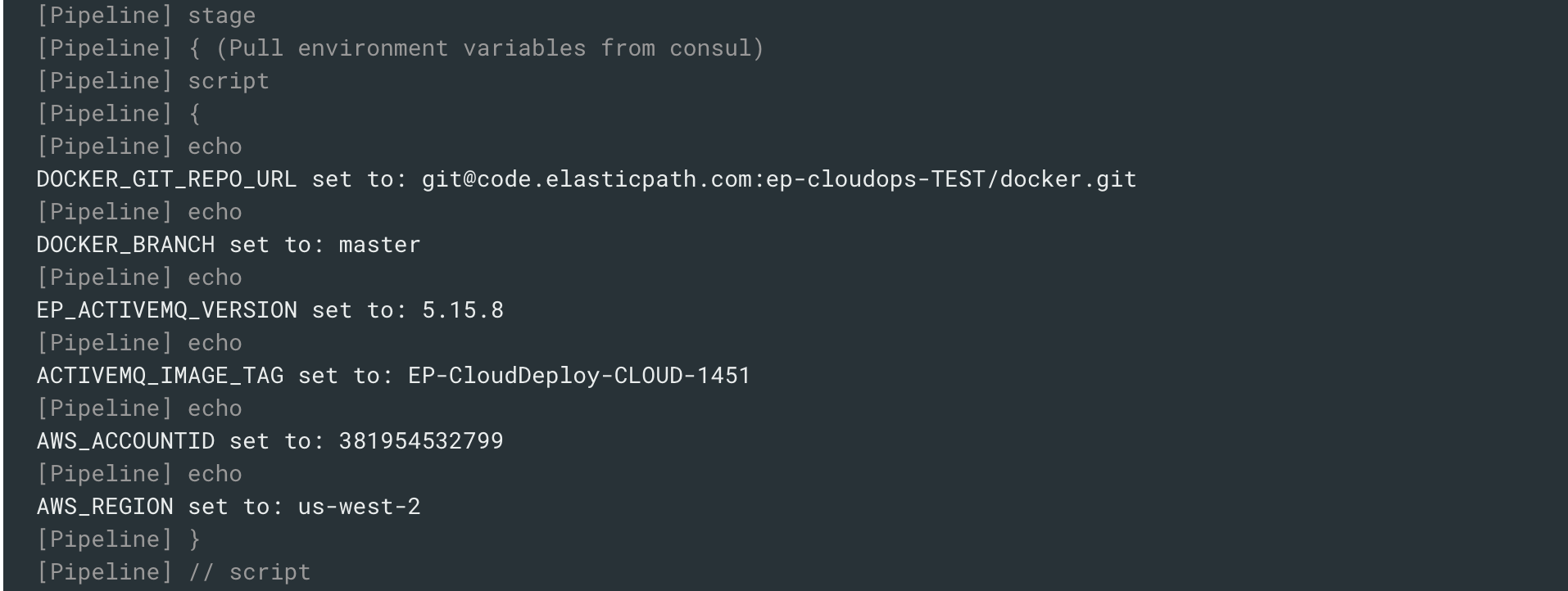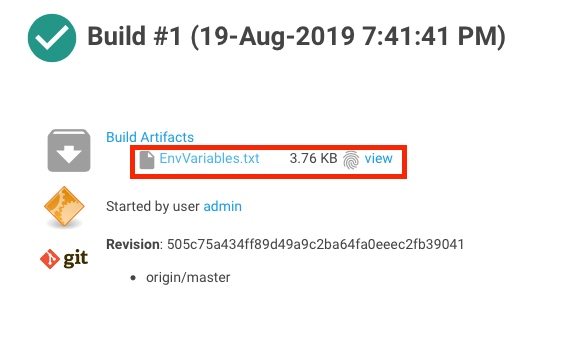Frequently Asked Questions Using CloudOps for AWS
important
CloudOps for AWS is a legacy tool and is no longer supported by Elastic Path Software. CloudOps for AWS release 3.5.x reached end-of-support in February 2023. For information about current Elastic Path Commerce deployment options, see Deploying Elastic Path Commerce documentation.
CloudOps Initialization
Failure In Initialization of CloudOps Component
Elastic Path CloudOps for AWS is implemented to run the initialization scripts only once per account. If you run into any issues, Elastic Path recommends manually deleting all AWS (Amazon Web Services) resources created by the initialization and then rerunning the initialization. This minimizes the risk of deleting important resources.
See the initialization validation documentation for the CloudOps component you want to cleanup to find which AWS resources need to be deleted:
- Validating CloudCore Initialization
- Validating CloudTeam Initialization
- Validating CloudDeploy Initialization
You can also delete everything on your AWS account automatically using a cleanup script.
Disclaimer: Elastic Path recommends deleting resources manually to avoid any mistakes, especially if non-Elastic Path resources exists in the AWS account. Use the scripts at your own risk with the assumption it may delete non-Elastic Path resources.
For generic instructions on how to cleanup CloudOps components using the cleanup scripts, see Cleaning Up the Components.
How do I set up the correct public or private keys to use the bootstrap Docker containers and initialize the CloudOps components?
When initializing CloudOps components, you must have a copy of the private keys that are authorized to clone from your CloudOps Git repositories. The CloudOps components do not support password protected keys.
Configuration
Where do I configure variables specific to my environments?
In AWS (Amazon Web Services) both single instance development environments, and Author and Live environments have their own .env configuration files that are stored with the CloudFormation templates. For example, the default single instance development environment configuration file is single-instance-mysql-container.env.
This is a simple key-value pair file that is sourced within each container, for that environment, creating environment variables that are selected by the various components, such as Tomcat’s setenv.sh script.
Where are Elastic Path Assets?
Assets are also mounted on the EC2 host as follows:
{
"Name": "ep_assets",
"Host": {
"SourcePath": "/ep/assets"
}
}
Credentials
This section discusses where the default usernames and passwords are set.
Where can I find default credentials for services created by CloudOps?
The default username and password for services like Jenkins, Nexus and Commerce Manager are found in Default CloudOps Endpoints and Credentials page.
What is the root username and password of an Author or Live RDS instance?
The root username and passwords are set by the Jenkins job DeployAuthorAndLive. Refer to the following Jenkins parameters located in the DeployAuthorAndLive parameters table.
LIVE_EP_DB_MASTER_USERLIVE_EP_DB_MASTER_PASSWORDAUTHOR_EP_DB_MASTER_USERAUTHOR_EP_DB_MASTER_PASSWORD
Refer to How do I reset the master user password for my Amazon RDS DB instance? for instructions on how to reset the root user password for an RDS (Relational Database Service) instance.
Jenkins Jobs
How to see the parameter values a Jenkins job is run with?
For each Jenkins job, the parameter fields that are left blank are populated with default values defined in the config store. The config store URL in the parameter description provides the default value for the parameter as in the following figure:

When you troubleshoot a build and want to check the set values for the parameters, you cannot view the run-time value from the Parameters tab as the values are customized for Jenkins jobs. If a parameter is set, the parameter is output into the Console Output tab, as shown in the following image:

Each build outputs all parameters defined in Jenkins and the config store, along with a full list of environment variables to an EnvVariables.txt file. The file is saved as an artifact attached to each build, as follows:

The EnvVariables.txt file is output to the Jenkins Console Output near the end of the build. This file defines all of the parameters that a job uses and is helpful when debugging a job.
Note For security purposes, security-sensitive data such as passwords and tokens are not shown in the file.
Each build outputs all parameters defined in Jenkins and the config store, along with a full list of environment variables to an EnvVariables.txt file. The file is saved as an artifact attached to each build, as follows:

The EnvVariables.txt file is output to the Jenkins Console Output near the end of the build. This file defines all of the parameters that a job uses and is helpful when debugging a job.
Note For security purposes, security-sensitive data such as passwords and tokens are not shown in the file.
The BuildEpImage job failed with a device mapper issue
Occasionally, a docker build command fails due to an underlying device_mapper storage driver issue. The options to resolve this issue are:
- Re-run the job
- Change the storage driver. You can uncomment the overlay2 config in the
Create-AMI.shscript, or use the config as an example to enable it
Editing Jenkins jobs
The Jenkins jobs are defined using Jenkinsfiles and the Job DSL (Domain Specific Language) plugin. The jobs are stored and versioned in a source repository, to edit the jobs, you must:
Edit the job files with your changes
Commit and push your code
Run the Jenkins
bootstrapjob, set the parameterCLOUDCOMPONENT_BRANCHto point to the Git branch name containing the changes
For information about how to create and edit Jenkins jobs, see The jenkins-job-dsl Wiki and Getting started with the Guided Tour.
Logs
How do I view Elastic Path Commerce application logs?
Elastic Path applications are configured to send logs to stdout for 12 Factor compliance. All CloudOps deployments of Elastic Path Commerce forward logs to AWS CloudWatch.
- In the CloudWatch dashboard, select Logs. You can see the CloudFormation stack and the logs.
Note: Using this log, you can set up any metrics or alerts.
How do I view data population logs?
Logs from data population from a data population tool are forwarded to CloudWatch.
Go to the Resources tab from the CloudFormation stack prefixed with one of EP-Author-And-Live-Environment--DataPopTask* to find the correct CloudWatch Log Group.
For example:
EP-Author-And-Live-Environment-EP-Single-Instance-Dev-Env-EP-CloudDeploy-
Note: Elastic Path Commerce and CloudOps use the Elastic Path Data Population Tool for populating data. In CloudOps for AWS, all logs from data population are forwarded to CloudWatch.
How do I view CloudFormation initialization logs from a CloudOps EC2 instance?
All CloudOps CloudFormation initialization logs are forwarded to CloudWatch.
Go to the Resources tab from the CloudFormation stack that created the EC2 instance to find the correct CloudWatch Log Group.
The CloudWatch Log Stream files are named in the following format:
{ec2-instance-id}/cfn-init.log{ec2-instance-id}/cfn-init-cmd.log
How do I view ECS agent logs from a CloudOps EC2 instance?
All ECS (Elastic Container Service) agent logs are forwarded to CloudWatch.
Go to the Resources tab from the CloudFormation stack that created the EC2 instance to find the correct CloudWatch Log Group.
The CloudWatch Log Stream files are named in the following format:
{ec2-instance-id}/ecs-init.log{ec2-instance-id}/ecs-agent.log
How do I view logs that are not in CloudWatch?
Access the EC2 instance that has the logs you need using the bastion server.